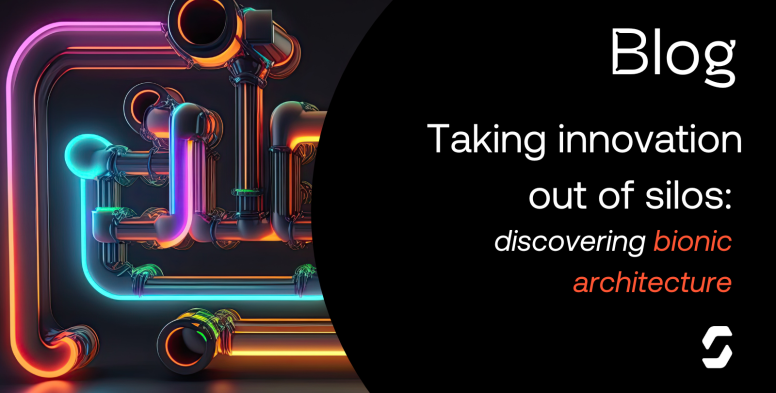
The focus this year for insurers needs to be about teamwork and collaboration, at least if they want to accelerate their digital transformation and keep pace with a changing market.
There’s a general misconception in the industry that digitisation, transformation and innovation are the remit of the IT department, the terminology itself suggests lines of code, configurable systems and technological wizardry.
When we talk about ‘architecture’ in particular, IT is the first department that usually comes to mind. The IT team has traditionally been behind the development of the architecture, the framework that holds the business and its systems together; but to get to the next level of transformation, we think the transformative burden must be shared more broadly.
Introducing bionic architecture
The concept of ‘bionic’ architecture encompasses innovation across the whole business, encouraging stakeholders to bring innovation out of departmental silos to unlock holistic change, and real benefits for the entire company.
Although having pockets of innovation across a business is fantastic, and individually will bring huge benefits, the danger is that you’ll end up with different areas trying to achieve different things in different ways. Another risk is that without taking a holistic view of innovation, you miss the opportunity to apply the benefits and learnings from one area to another, missing out on a powerful force multiplier.
Taking a bionic architecture approach means to consider how you might plumb these individual bionic capabilities together to create a holistic transformation journey,
For example; one of our customers is already seeing huge benefits having digitised their rating capabilities through our Underwriting Workbench. They also have a fully operational reporting suite that provides deep insight into all the rating and underwriting information. Alone, those two pockets of innovation are valuable, but when allowed to interact through a bionic approach to architecture, they have the power to use that data to complete sophisticated trend analysis, make real-time changes in response to market movements and understand the impact of those changes. That’s powerful stuff.
The sum of the parts
In order achieve this, you need to have a joined-up approach. You need to have individuals representing, not just IT – though they may do the ultimate work to implement many of these changes, but from compliance, claims, underwriting, and actuarial, to name a few.
Everyone must have the ability to see and input on innovation across the business and have a chance to consider how these projects could augment their own areas. It takes teamwork, and it needs sponsorship right from the top.
The exciting thing about bionic architecture is that although it can be difficult to assess exactly what these force multipliers might be, there will be some. Innovation that can have surprising impacts and the steps made in one area of the business can have a significant positive impact elsewhere.
Businesses looking to start out on, or even continue their transformation journey must ask themselves, how they can pull together to create an architecture that supports all their goals, not just those of one team. If you think of innovation as an IT-led project, you won’t get anywhere close to the architecture you need to thrive in today’s fast-changing marketplace.
Contact us to find out how you can take the first steps to implementing a bionic architecture for underwriters that’s future ready.
Author: Ben Huckel, co-founder and COO, Send. You can connect with Ben on LinkedIn or email: ben.huckel@send.technology.